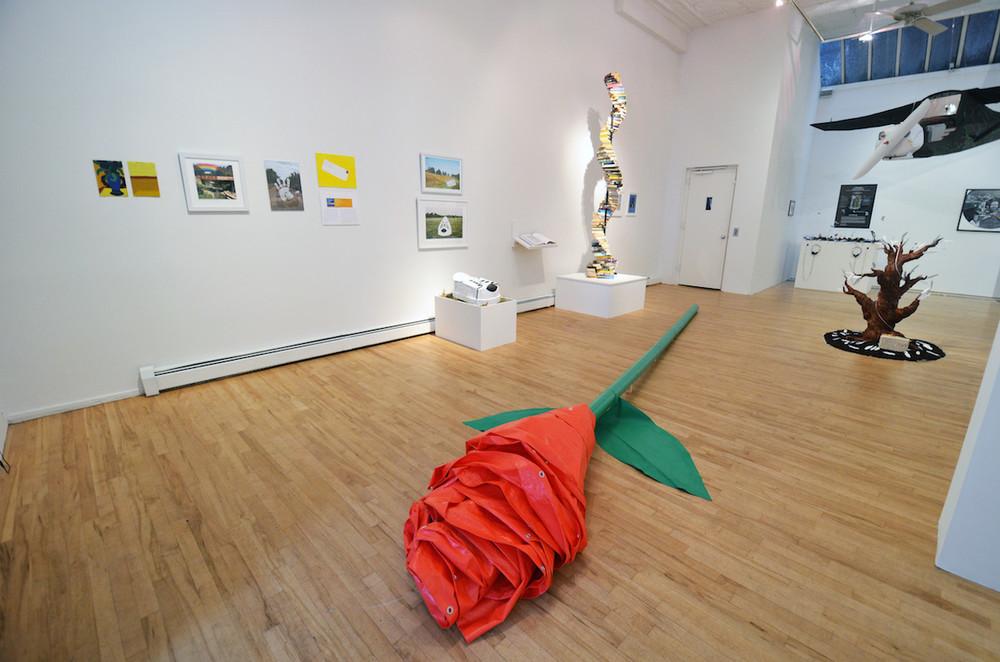
Death row inmates from a maximum-security prison just outside of Nashville have had their art exhibited in a New York based gallery, Apexart, through their nonprofit unsolicited proposal program. The show was organized by professors at Nashville’s Watkins College of Art, Design & Film, Robin Paris and Tony Williams, whose goal was to challenge the morbidity and the intensity of capitol punishment in the American Justice system.
The exhibition is titled Life After Death and Elsewhere and unlike the art made through most in-prison art rehabilitation programs, the art of this exhibition is entirely done by death row inmates, many of whom already know when they will be dying by lethal injection.
The art created by these inmates is done by a collection of men who share the same fate, a condemned life and penalty for their crimes that distorts the ends of their lives to be entirely focused on the morbid truth and darkness of their impending deaths.
The most interesting aspect of the death row exhibition is the fact that while these men are imprisoned, sentenced to death for the worst of crimes, their art reveals a group of deeply realized men who have had time to absorb and realize their fate.
The organizers of the exhibition described the deep, deep darkness that was revealed by the pieces that inmates created. The theme that they decided to focus on was self-memorilazation.
To the majority of the public, death-row inmates are seemingly soulless people. Their crimes are horrible enough to have received the highest of penalties, so the idea that they could be the creators of conceptual art, art with meaning and focus, is likely a shock to the general public.
This exhibition challenges the norms and the preconceived notions of society, a video installation called Telling Our Story, shown along with the rest of the inmates art pieces, tells the stories of the inmates and the reasons behind their art.
The exhibitionists are not naïve; they recognize the horrendous crimes of these men. But the art shown reveals the humanity that lives on in these men.
The background behind their crimes is more exposed in this exhibition than it ever is in the courts. One sentenced man who beat, raped, stabbed and killed a young boy has never shown remorse while in courts. Yet in the show he reveals in his paintings and written words, his history of forced prostitution and heroin addiction, committing crimes as a youth so that he could be protected from his own family by going to juvenile detention.
The exhibition questions the justice system and how justice could truly be served in situations like the one of that previous inmate. The show grapples with numerous dark issues and hard social critique.
That does not mean that it is easy to think about looking at the art of hardened, heinous crime-committing men, and trying to see past what they have done. The art show attempts to reconcile the inhumanity and horrors that these men have caused with their pasts and the human aspects of their selves.
One inmate painted a picture of himself as a child at a community center, saying that he wished a place like that would have kept him out of trouble. Another made a 20-foot flower out of waste from the lunchroom and various bits of acrylic paint. For him it represents the potential value and beauty of what everyone overlooks and discards.
There are poems and stories of childhood abuse, dioramas of books and symbols of peace and inner resolution. One man designed the structure of an amphitheater built from the rubble of old prisons. A hope, he says, for future Americans to understand and give them the chance to practice restorative justice.
Even for the inmates this project and exhibition were rather confusing. For some they felt it was a chance to show their humanity, give a plea to the system of American justice and capitol punishment. Others felt that by participating in the exhibition they were giving in to their fate. They felt that creating a memorial calling to their eminent future it was like giving up.
The curators of the show, however, insisted that these memorials did not have to be anything like that. Instead these memorials could represent the lives and the opinions that these men have, what they wish they had accomplished, or even remain as something other than their crimes that they could be known for in the future.
This show has an interesting aspect of it that, despite the darkness of these men’s pasts, carries their thoughts and their voices into the light of society. Whether or not everyone believes that they deserve this chance, these death row inmates and their art sheds a powerful light on the thoughts and the existence of humanity even within the hardest of criminals.






